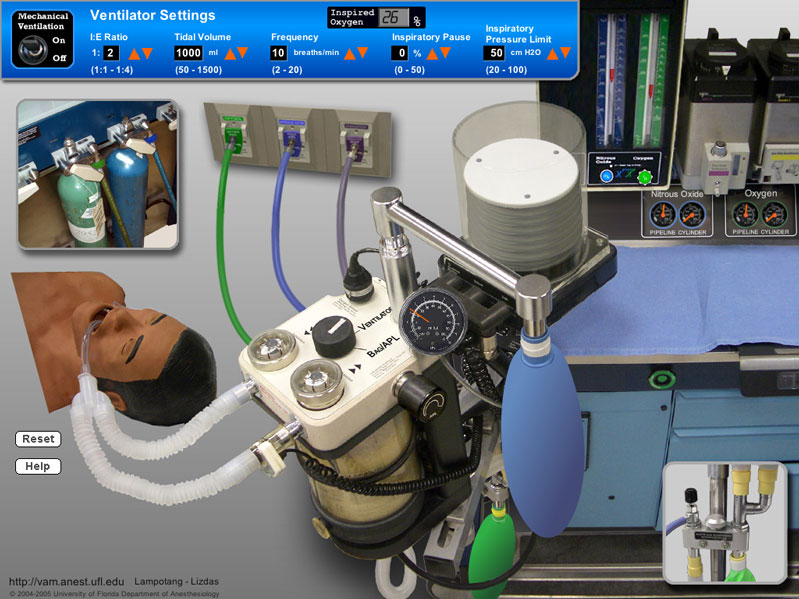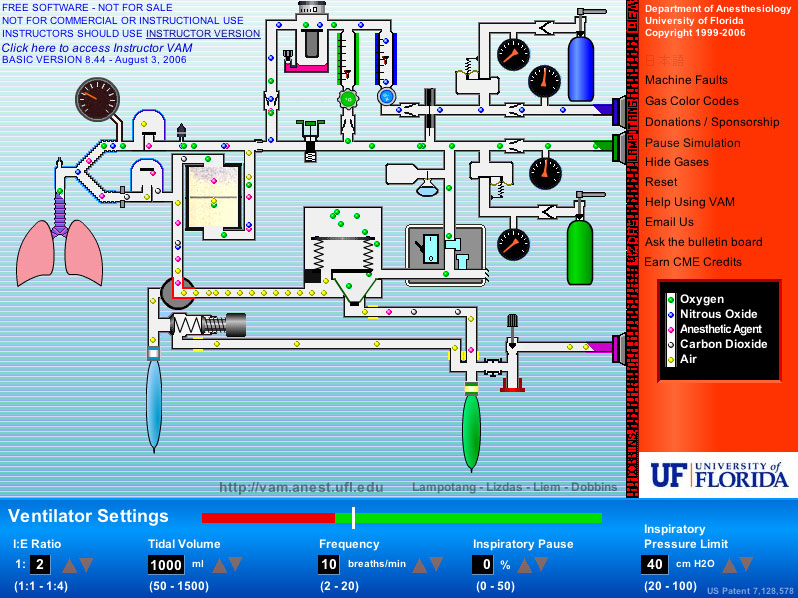
Ira Fischler, Cynthia Kaschub, David Lizdas & Samsun Lampotang. Understanding of Anesthesia Machine Function is Enhanced with a Transparent Reality Simulation
Iconic simulations that closely reproduce the visual appearance of the simulated system may provide more efficient transfer of skills to the real system, but by being opaque, fail to encourage deeper learning of the structure and function of the system. Schematic simulations that are more abstract with less visual fidelity but which make system structure and function transparent may enhance that deeper learning, and optimize retention and transfer of learning. Undergraduate students were given a single, one-hour guided learning session with either a Transparent or Opaque version of the Virtual Anesthesia Machine (VAM) simulation. The VAM simulates actual machine function and dynamics and responds in real time to user interventions such as changes in gas flow or concentration. The following day, the learners’ knowledge of machine components, function and dynamics was tested. There were no group differences in self-reported knowledge of anesthesia or the anesthesia machine prior to learning. At test, the groups were comparable in the ability to name the components of the machine, but the Transparent-VAM group provided better and more complete explanations of component function (p = .004), and was more accurate in remembering and inferring cause-and-effect dynamics of the machine and relations among components (p = .013). Schematic simulations that transparently allow the learner to visualize, and explore, underlying system dynamics and relations among components may provide a more effective mental model of the system. This leads to a deeper understanding of how the machine works, and therefore, we believe, how to detect and respond to potentially adverse situations.
Workbook for Opaque VAM Simulation
Workbook for Transparent Reality VAM Simulation 